Microsoft provides Windows 10 ISO files for clean installation of a new system. Usually those ISOs lack the latest Windows 10 hotfixes / patches / security updates. Luckily you can create your own up to date Windows 10 ISO files when you slipstream Windows 10 with all existing updates.
What does it mean to slipstream Windows 10?
The concept of Slipstreaming refers to integrating updates, patches or service packs into the installation files of their original software. Slipstreamed Windows ISOs allow a fresh installation of an up-to-date Windowswhich is of great benefit for system administrators who often manage hundreds of systems.
But to slipstream a Windows 10 ISO is also beneficial for everybody who installs Windows 10 more frequently for friends or family members. To create a slipstreamed Windows 10 ISO you do not need special knowledge and no commercial software. On fast systems the process can be finished in just some minutes. Below you find the whole procedure as a video and in a step-by-step tutorial.
1. Check all installed Windows 10 Hotfixes / Patches / Security Updates
It is good to have a reference of all available Windows 10 updates. To review all installed hotfixes on your system, just type view installed updates into the Windows 10 Taskbar search and click on the result.

This opens Program and Features > Installed Updates in the Windows 10 Control Panel. You can leave that windows open to check back later in the slipstreaming process.

2. Download all available Windows 10 Hotfixes / Patches / Security Updates
Usually Windows 10 updates and installs all hotfixes / patches / security updates automatically. But to slipstream Windows 10 you need the single installation files for those updates.
One great tool to obtain them is WHDownloader which can be downloaded here. It does not require installation and can be run just by clicking the WHDownloader executable.

After starting WHDownloader click the upper left arrow to download a list of all available Windows 10 updates.

Then choose your Windows 10 version, either Windows 10 x64 for 64 bit or Windows 10 x86 for the 32 bit version. You will see a list of all available Windows 10 updates. Select all of them and then click Download on the bottom of the window. They will be stored in a subfolder called Windows 10 of WHDownloader.
Here you can check if all available updates have been found. In our example we see more upgrades as Windows 10 got upgraded from an earlier Windows 10 Technical Preview build.
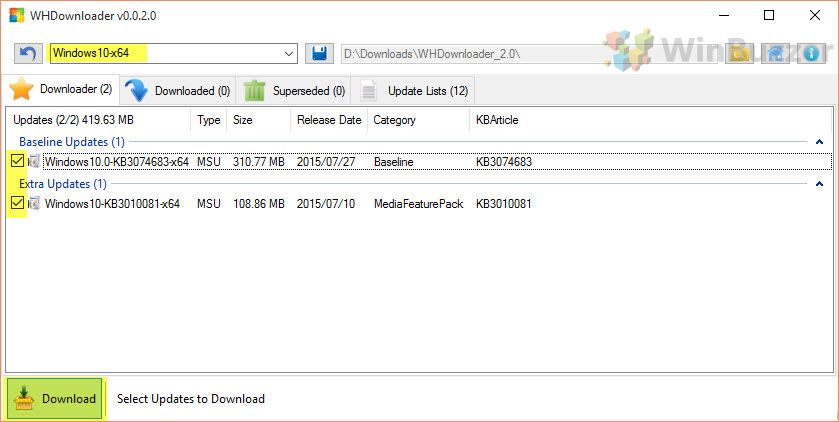
A powerful alternative to WHDownloader is WSUS Offline Update which does the same job but offers more options. One major advantage of WSUS Offline Update is that it does not rely on handcrafted lists of available updates and therefore is automatically up to date. Update lists of WHDownloader in comparison are updated by developers and supporters of that tool which may result in delays.
If you use WSUS Offline Update to download all updates to slipstream Windows 10, just select Windows 10 and define a folder where you want the updates to be safed.
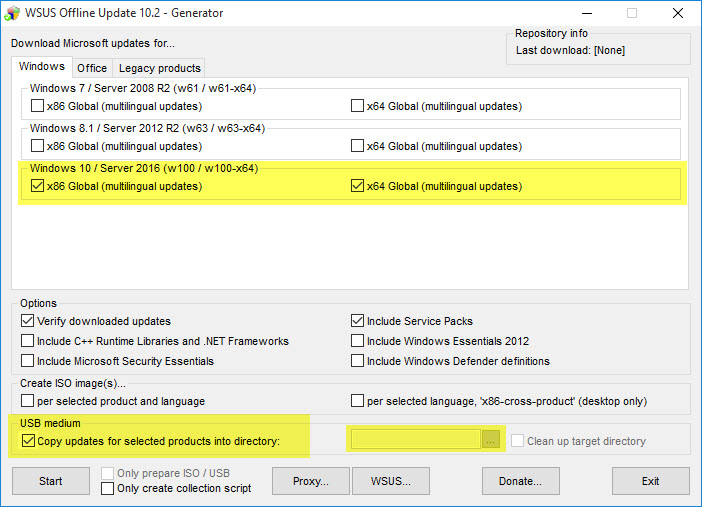
3.Download Windows 10 ISO and extract and copy files and folders
Download an ISO file of Windows 10 and double click on it in Windows 10 File Explorer. This will mount that Windows 10 ISO as a virtual DVD drive.
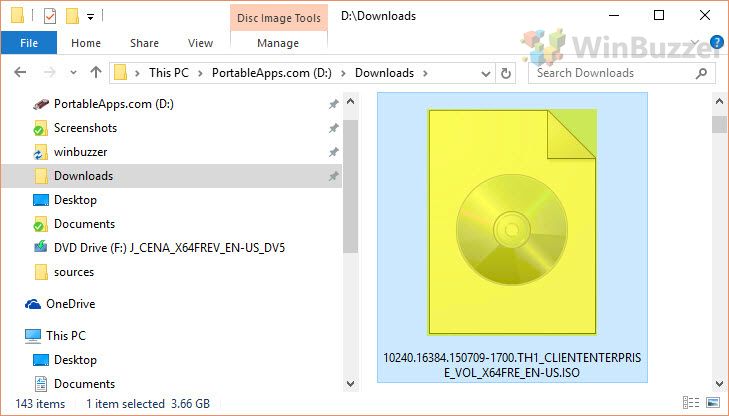
Change to the mounted Windows 10 Installation DVD and copy all files and folders to a new folder on your harddisk. You can call it Windows 10 extracted or similar.
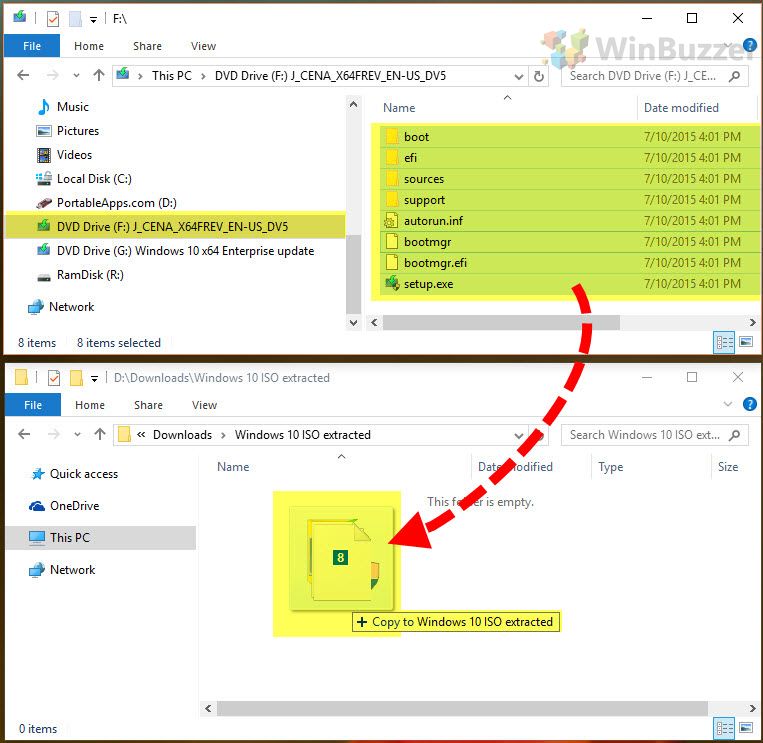
4. NTLite: Open and load Windows 10 ISO data files
In the next step we use the free version of the tool NTLite which can be downloaded here. Open it and chooseAdd > Image folder in the upper left corner.
Then select the folder where you copied to the extracted Windows 10 ISO files.
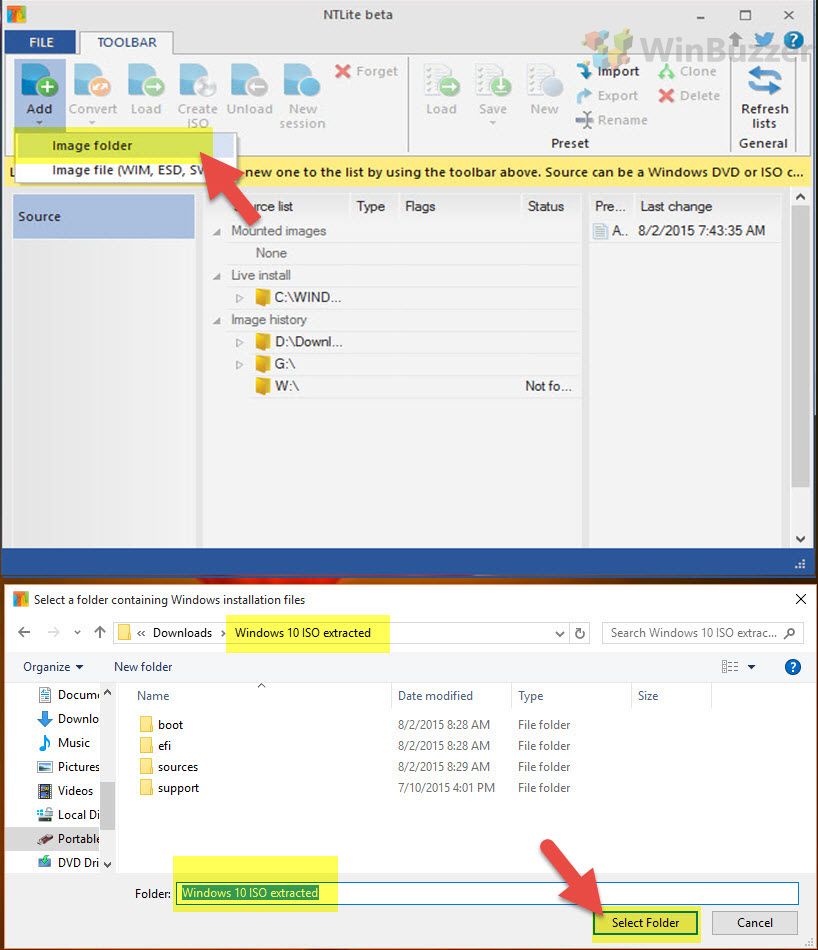
In the details window of NTLite go to Image history and find your attached Windows 10 ISO. Right click on it an select Load. This will open the original Windows 10 ISO for transformation.
5. Load all downloaded Windows 10 Hotfixes / Patches / Security Updates
Choose Updates in the left panel and click on Add > Folder and subfolders found packages. Then select thesubfolder of WHDownloader or WSUS Offline Update where the downloaded Windows 10 hotfixes / patches / security updates had been saved.

NTLite will list all found updates in the queue and you are ready to slipstream updates into Windows 10.

6. Slipstream Windows 10 Hotfixes / Patches / Security Updates into new ISO file
Click on Apply in the left panel of NTLite and select Create ISO in the toolbar. Then select a folder and filename where NTLite should store the slipstreamed Windows 10 ISO file. It is good to set a timestamp in the filename to later know the exact version of the ISO as you might repeat the process of slipstreaming in the future.

You can now slipstream Windows 10 with a click on Start in the toolbar. After some minutes you will find your self-created up to date Windows 10 ISO file in the folder you have defined before.

